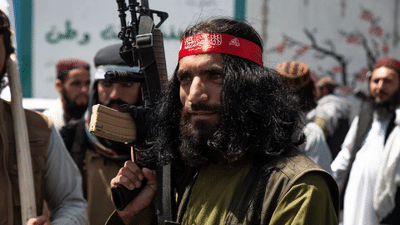As representatives from Pakistan, the Taliban, Turkey, and Qatar convene in Istanbul for crucial talks aimed at de-escalating border tensions, an extensive report detailing the vast military hardware now controlled by the Taliban has emerged. Citing Taliban security sources, a BBC Pashtun report provides a breakdown of the formidable arsenal, which was primarily acquired following the 2021 withdrawal of foreign forces.
The Taliban's military strength is drawn from three main sources: equipment left behind by the United States, Soviet-era weapons remaining from previous conflicts, and arms sourced through the illicit black market.
Key Weapons Categories Controlled by the Taliban| Weapon Type | Specific Models Reported | Origin/Notes |
| Light Weapons | Over 1 Million including M-16s, M-4s, Kalashnikovs, M-29 light machine guns, Pika M-2s, and M-240 heavy machine guns. | A substantial portion, including the advanced M-series rifles and machine guns, was seized as U.S. and NATO equipment was abandoned during the withdrawal. |
| Anti-Tank and Rocket Systems | RPG-7 rockets, Grenade launchers, and four anti-tank missiles. | These weapons are crucial for infantry engagement and guerrilla-style attacks. |
| Artillery and Mortars | 122mm howitzers (known as D-30s), approximately 50 155mm howitzer mortars, and Russian weapons like the ZT-2-23. | Provides medium-to-long-range fire support capabilities. |
| Ballistic Missiles | Scud missiles, R-17s, and R-300 Elbrus (range of 300 km), along with the Luna missile (Frog-7). | These Soviet-era tactical and ballistic missiles represent the longest-range threat in their inventory. |
The report notes a key vulnerability: despite this substantial ground arsenal, the Taliban is significantly lacking in air combat capabilities and does not possess a single modern fighter jet.
Guerrilla Strategy and Pakistan TensionsThe Taliban’s military doctrine reportedly focuses on guerrilla warfare, a strategy they credit with their victories against both the United States and the Soviet Union. This capability is viewed as essential for defeating Pakistan in border clashes.
In a move interpreted as a direct warning, the Taliban Foreign Minister reportedly advised Pakistan to "learn from the US and Russia" regarding the outcomes of prolonged conflicts in Afghanistan.
You may also like

'Got a dupe LV?' think twice: Ajman Police and Louis Vuitton just teamed up to end the fake trade

Russia threatens to send hypersonic missiles to Venezuela in major move against Trump

Trump humiliated as Russia compares US President to insect in brutal 3-word jibe

Chips will always be crispy with Nigella Lawson's 'game changing' tip

F1 star left stunned as race bosses call him out publicly over dangerous situation







